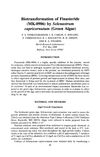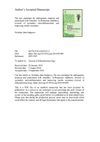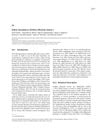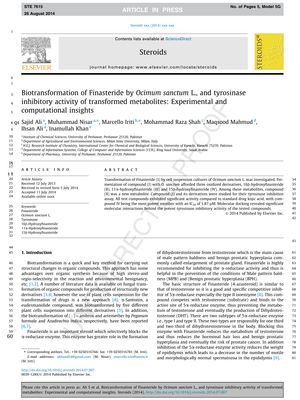TLDR Fermentation of Finasteride with Ocimum sanctum L. creates new metabolite that inhibits tyrosinase.
The study found that the fermentation of Finasteride with Ocimum sanctum L. resulted in three oxidized derivatives, including a new metabolite, which exhibited significant tyrosinase inhibitory activity. The study suggests that biotransformation is a useful method for carrying out structural changes in organic compounds.
219 citations
,
October 2009 in “Steroids” 5α-reductase inhibitors, like Finasteride and Dutasteride, help manage benign prostatic hyperplasia.
 1 citations
,
December 2006 in “Annals of the New York Academy of Sciences”
1 citations
,
December 2006 in “Annals of the New York Academy of Sciences” Green algae can break down finasteride, reducing environmental harm.
48 citations
,
February 2006 in “Molecular and Cellular Endocrinology” 5α-reductase inhibitors may reduce male fertility and could be used for male contraception.
 16 citations
,
September 2018 in “Journal of Ethnopharmacology”
16 citations
,
September 2018 in “Journal of Ethnopharmacology” Plant-based remedies may treat hair loss by reducing inflammation and improving insulin resistance.
 August 2022 in “International journal of research in pharmacy and chemistry”
August 2022 in “International journal of research in pharmacy and chemistry” Teak is a durable, termite-resistant wood with medicinal benefits.
 6 citations
,
October 2017
6 citations
,
October 2017 Indian Gooseberry has potential for cancer prevention and treatment and promotes hair growth.
 3 citations
,
January 2017 in “Revista chilena de nutrición”
3 citations
,
January 2017 in “Revista chilena de nutrición” Certain natural compounds called terpenes may help prevent prostate cancer.
 March 2024 in “International Research Journal of Modernization in Engineering Technology and Science”
March 2024 in “International Research Journal of Modernization in Engineering Technology and Science” The herbal shampoo made hair shinier, smoother, and softer without side effects.








